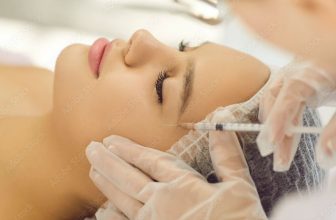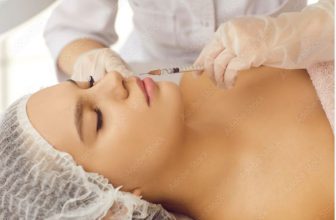
What Do Nurse Practitioners Wear?
The nurse practitioner field is experiencing rapid growth and is known for its diligent professionals. Understandably, there may be some misunderstandings about the roles and duties of nurse practitioners as the profession and field expand. For instance, raise your hand if you’ve ever had a patient ask for a “genuine” doctor. (Insert eye roll here).
Why do nurses need to wear proper clothing?
The purpose of nurse uniforms and other types of medical attire is to instill a sense of consistency. If a doctor or nurse wears a lab coat, the patients and other medical staff will immediately know who they are dealing with. Most significantly, they prevent cross-contamination between healthcare workers and their patients, preventing illness transmission.
Infestations of bugs are common in hospitals and other healthcare facilities. Since it serves as a hub for infectious agents, every effort must be made to prevent disease transmission by keeping the area clean and disinfected. A nurse’s attire should keep her cool and dry while providing quick access to medical supplies.
What is the Dress Code for Nurses?
Organizations have different dress regulations but can cover anything from nursing scrubs to piercings and tattoos. The following are examples of acceptable dress codes in the workplace:
- Nurses should wear scrubs of a particular hue.
- In specific situations, a lab coat should be worn.
- Shoes must be water- and noise-proof.
What color do nurses wear?
White uniforms pose a challenge regarding cleanliness and are not commonly utilized in contemporary healthcare facilities. The majority of nurses today dress in bright blue. It makes them easier to clean, helps to set them apart from doctors and orderlies, and creates a welcoming atmosphere. Since green is frequently connected with feelings of tranquility and health, it’s no surprise that green scrubs are worn for the same reasons.
What do nurse practitioners wear?

Nurses dress in a way that protects both them and their patients. A nurse’s uniform will vary slightly depending on the setting in which she works and her specific responsibilities within that setting, but it will often consist of the following items:
Medical Scrubs:
Scrubs are the uniform of choice for most nurses in the workplace. Scrubs are uniforms worn in medical settings; they are straightforward garments that are simple to clean and sanitize. It’s common for nurses to wear uniforms of a single solid color so that patients can easily tell who cares for them (and for nurses to spot stains) in low-risk environments or wherever the dress code permits; these modern designer scrubs are frequently worn.
The majority of scrubs are constructed from a polyester and cotton combination. It makes for an easy-to-clean uniform that won’t fade or collect germs. Scrubs can be made of various materials, including cotton, rayon, and spandex blends.
Surgical Dressings:
During procedures and in surgical units, nurses wear gowns. Doctors and surgeons also wear these garments to defend against germs and other pathogens. There are many different kinds of dresses available, including:
Surgical Gowns:
They provide excellent protection from splashes, particularly around the wrists, and are often called surgical isolation gowns.
Coveralls:
These gowns are frequently worn when handling potentially infected blood and other pollutants and are fluid-resistant.
Non-Surgical Gowns:
When there is a medium danger of contamination, it is worn.
Nursing Shoes:
Shoes used by nurses should be soft, quiet, and water-resistant. A wide variety of nursing shoes are available, from clogs to athletic shoes. Clogs are useful because they are both comfortable and supportive and prevent falls on wet or otherwise hazardous flooring. The feet will be protected by clogs, which are very simple to clean. Because of its reduced weight and increased flexibility, athletic footwear is ideal for increasing the range of motion.
Face Masks:
Face masks have become a staple daily, but their importance in preventing airborne infections has long been recognized in hospitals and other high-risk settings. Observe the brave nurses who don these masks as their shield against the onslaught of coughs, sneezes, and other bodily fluids.
Depending on the setting and the nature of the patient, a nurse may wear various face masks. In the past, they might have been restricted to hospital stays and interactions with extremely contagious individuals. In 2020, they were introduced and quickly became standard in healthcare facilities such as hospitals, nursing homes, and even at-home care settings.
Nurses don’t mess around when it comes to keeping their masks clean! You’ll often see them sporting single-color face masks – classic blue or green – so they can easily spot any pesky stains that might stick around.
Medical Gloves:
Nurses always wear protective gear when handling potentially infectious patients or substances with high toxicity levels, such as the surgical gloves used in the operating room. Medical gloves serve as a protective barrier for both nurses and patients against possible infection. In recent years, the usage of medical gloves, along with face masks, has increased due to the emergence of COVID-19.
Smartwatches:
Watches have traditionally played a significant role in healthcare and are as essential to a nurse’s attire as comfortable shoes. The nurse must monitor the clock to manage schedules, check in on patients, give medications, and more. Smartwatches like the Apple and Samsung Watches have become increasingly popular recently. In addition to precisely displaying the time, these gadgets can also be used to check text messages and emails, set alarms, and track the nurse’s activity levels.
Smartwatches can assist nurses in maintaining their health and well-being by monitoring their activity and sleep patterns, alerting them to potential nurse burnout, and reminding them of important tasks such as social activities, prescriptions, and meals. Additionally, wearing a smartwatch allows nurses to receive calls, texts, and notifications without needing their phones.
Are white coats required for nurse practitioners?
They can! It depends on the facility and the patients. Doctors and scientists frequently wear white coats. They are worn by doctors and dentists, pharmacists, nurse practitioners, physician assistants, and other dental professionals.
While some Doctor of Nursing Practice programs require their students to don the classic white lab coat, I tend to steer clear of it when working with the little ones – after all, who wants to make an already anxious patient even more jittery?
Do nurses wear bras with scrubs?
Under their scrubs, nurses wear undergarments, including bras. They might also wear warm underwear, depending on the weather. Scrubs worn in the medical field tend to be baggy. This makes them more comfortable, allows the wearer to move freely, and makes room for base layers and other clothing.
What to wear on a nurse’s first day?
When starting a new job, obtaining a set of medical scrubs and familiarizing yourself with the dress code policy is important. Some workplaces may have regulations regarding visible tattoos and piercings. Although not all modern healthcare institutions often accept patients with visible body modifications such as tattoos and piercings.
FAQ’s
How do female nurses dress?
Nurses wear uniforms. This is a truth of life. While some healthcare institutions designate nurses by the color of their scrubs, others let you wear whatever you like.
How do nurses style their hair?
Ponytails are the traditional hairdo for nurses, and it’s easy to understand why: they’re simple to create and always look put together.
Can nurses wear black uniforms?
Some nurses and doctors choose to wear black scrubs since it is seen to be a slimming color. Black attire, in general, exudes an air of sophistication and sophistication. Since they make people appear thinner, black scrubs are more common among nurses.
Can nurses have tattoos?
The short answer is yes. Although having a tattoo is unlikely to prevent you from becoming a nurse, there are a few things to remember. Tattoo policies, if any, and visibility limits at work might vary widely.







